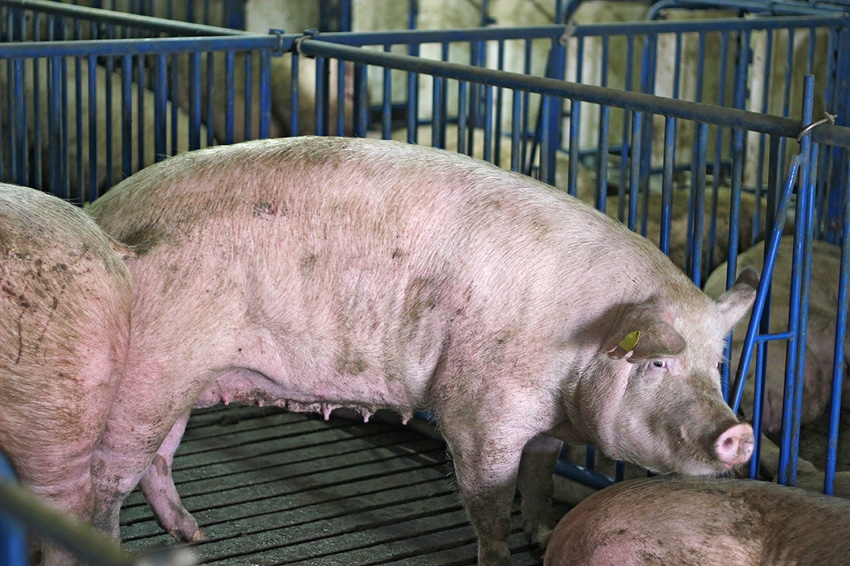"High-Performance Sow" session at expo focuses on rethinking interactions between nutrition and health of modern sows.

Speaking at the American Feed Industry Assn.-hosted session on "The High-Performance Sow -- Rethinking Nutrition & Health Interactions" at the International Production & Processing Expo, Dr. Eric van Heugten with North Carolina State University encouraged supplementation of essential fatty acids, particularly linoleic acid, to modern sows during lactation.
Van Heugten said the modern sow produces almost the same amount of milk per day as a dairy cow but produces more nutrients in that milk. Additionally, the modern sow consumes less feed and has less fatty tissue to mobilize during lactation than historic sows, but the modern sow produces more milk and weans larger, heavier litters than her predecessors.
He went through a series of data showing how feeding fat to sows during lactation tended to increase sow bodyweight (or minimize sow bodyweight loss) and the litter's average daily gains, but those results varied by fat source.
Van Heugten concluded that essential fatty acid supplementation will keep sows in the breeding herd longer, particularly when fed to higher-parity sows.
Longevity
Also at the "High-Performance Sow" session, Dr. Jason Ross of Iowa State University described a recent project he is involved with to ascertain risk factors related to pelvic organ prolapse (POP) incidence and mortality rates in sows.
Ross said there is not currently a good understanding of the root causes of POP, but it the underlying causes appear to be unrelated to the causes of other types of sow mortalities.
According to Ross, a few of the proposed factors that have been found to not influence POP rates include herd size, certain sow management practices such as induction and sleeving protocols, sow tail length, hygiene and feed particle size.
However, Ross and his colleagues are now focusing on water quality, sow body condition, antibiotic use patterns, bump feeding strategies and perineal scores (which may be indicative of prolapse risk when scored just prior to farrowing). They are also investigating small molecules found in serum from sows that may influence POP risk, but some of those molecules have not yet been characterized.
About the Author(s)
You May Also Like

.png?width=300&auto=webp&quality=80&disable=upscale)

